PHILADELPHIA, 9 September –- Gamification with Kevin Werbach of the University of Pennsylvania’s Wharton Business School, Week 2!
The raw materials of games and gamification are called game elements. We’ll earn how to break down a game into its constituent parts and apply them to create gamified systems.
Class Notes — Part 4 — Game Elements
4.1 Breaking Games Down
patterns, tools – that we can extract from games and use in other practices
Tic-Tac-Toe – what are the regular patterns, pieces, that come together with aesthetics and overall experience that make up the game play?
• The Board
• The Tokens (X and O)
• Two Players
• Competitive
• Take Turns
• Win and Draw states
• No progression or scoring
Experiences >> Games << Elements
4.2 The Pyramid of Gamification Eelements
Dynamics
^^
Mechanics
^^^^
Components
Around these elements is the overall Experience of the game, and Aesthetics, etc – design creatively based on circumstances
Here we’re focusing on generic patterns.
Marc Leblanc – MDA Framework – Mechanics, Dynamics, Aesthetics
Game Dynamics – the grammar – the hidden elements
1. Constraints
2. Emotions (gamification generally narrower range than real games, but still diversity here)
3. Narrative less than in games, but can rely on consistent graphical experience, not just a bunch of abstract stuff, needs sense of coherence and relationship to player’s life
4. Progression – very important aspect, chance to improve, not necessarily Levels & Points
5. Relationships – peeps interacting
Game Mechanics – the Verbs – process that drives action forward
Challenges
Chance
Competition / Cooperation
Feedback
Resource Acquisition
Rewards
Transactions
Turns
Win States
Game Components – Nouns – specific instances of mechanics and dynamics
Achievements
Avatars
Badges
Boss Fights
Collections
Combat
Content Unlocking
Gifting
Leaderboards
Levels
Points
Quests
Social Graph
Teams
Virtual Goods
Lower levels implement higher-level concepts
points are examples of things higher up – progression, narrative, etc
4.3 The PBL Triad
• Points
• Badges
• Leaderboards
A fundamental attraction to using these elements in gamification. Most of the common examples like Samsung Nation have PBLs at their core.
What functions do they serve? They’re not everything – gamification shouldn’t start and end with PBL.
POINTS
• Keep Score
• Determine Win States
• Connect to Rewards
• Provide Feedback
• Display of Progress
• Data for the game designer
• Fungible – which means that points can be used to represent anything – a universal currency
BADGES
• Representations of Achievement (typically button like graphic on profile page or other place that people can see)
• Flexibility – badge can represent whatever the game designer want / wants to motivate
• Style (graphical style can communicate vibe / overall asesthtic)
• Signaling of Importance
• Credentials
• Collections – a “bookcase” is an invitation to fill it up
• Social Display (status symbols)
>> Mozilla Open Badge Framework – how do you credential?
https://wiki.mozilla.org/badges
LEADERBOARDS
• Ranking – Feedback on competition – danger & challenge – can be discouraging, make peeps abandon game
• Personalized Leaderboards – zoom in on your own score
>> Friend-relative variant
Leaderboards have been shown in many studies to demotivate – can make people less willing to engage – focuses too squarely on zero sum game.
4.4 Limitation of Elements
Many companies think that just throwing game elements is enough. Elements are a starting point but not the entirety of what you need to do.
• The elements are not the game. Alone they don’t guarantee success. They’re at the base of the pyramid, they don’t tell you that the experience is engaging.
• Not all Rewards are fun / Not all fun is rewarding.
Don’t obsess on PBL in lieu of TRUE Engagement.
PBL can lead to Cookie Cutter feeling.
(bad) Example: Google News Badges – don’t truly seem to motivate. Just get a badge for looking at a bunch of, eg, Basketball or Politics articles.
Elements Alone >> What About:
• Meaningful Choices?
• Puzzles?
• Mastery? – is there really a pathway to true competence? or just a staircase?
• Community?
• Different kinds of users? – need more than 1 kind of structure
4.5 Bing Gordon interview
former Chief Creative Officer at EA
Kleiner Perkins Caufield & Byers (Coursera investor)
Gamification is the new normal for people born after 1971
if you want employees / customers born after 1971 you have to understand how they think
• Instant (tangible) Feedback
Typical Civilian Mistakes
> it’s about winning (cooperation trumps)
> it’s about high score (you only get motivated when you’re 90% on the way to success)
–> Increase Engagement, not just opportunity for trash talk
Principles of games – using numbers and mechanics to improve motivation – been going on for a long time – how many FB / Twitter friends you can get.
Play is the great accelerator of human culture.
However Games are polarizing – some people react poorly to extrinsic motivation
Numbers on surface of products – new normal – gaming luddites don’t realize (numbers were a turn off in the past – except for baseball fans)
Going to put a lot of pressure on assembly line education business. Gaming was invented by high potential kids who were bored of lectures. Being bored with lectures is a good indicator of future success.
Kids who’ve grown up digital think the purpose of the world is to be the best self you can be – only have 100 years on planet – get better feedback, be more productive
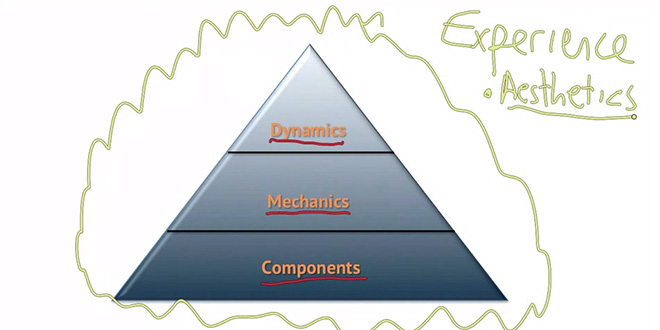
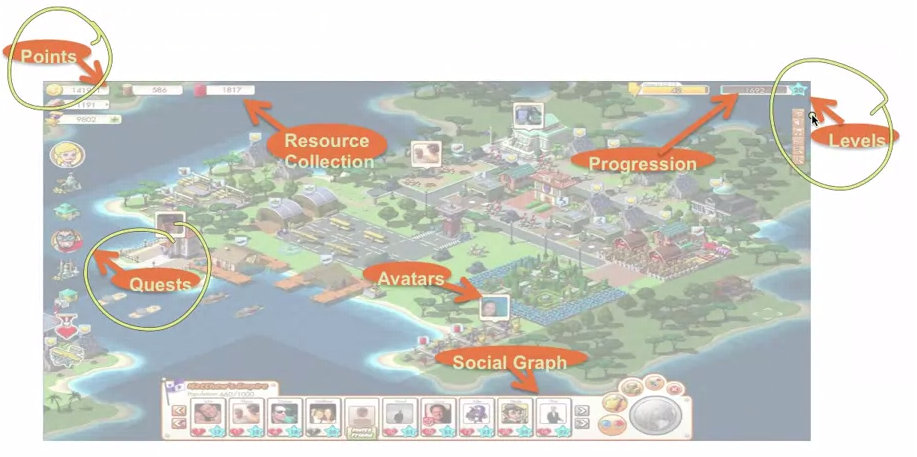



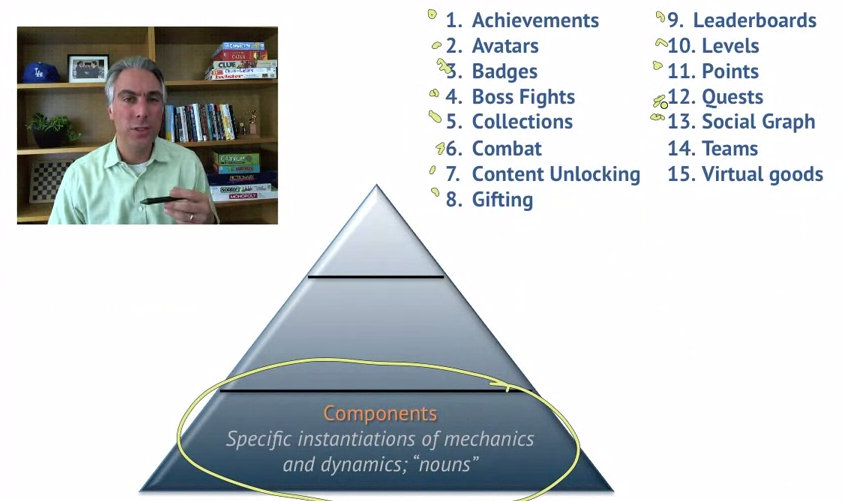
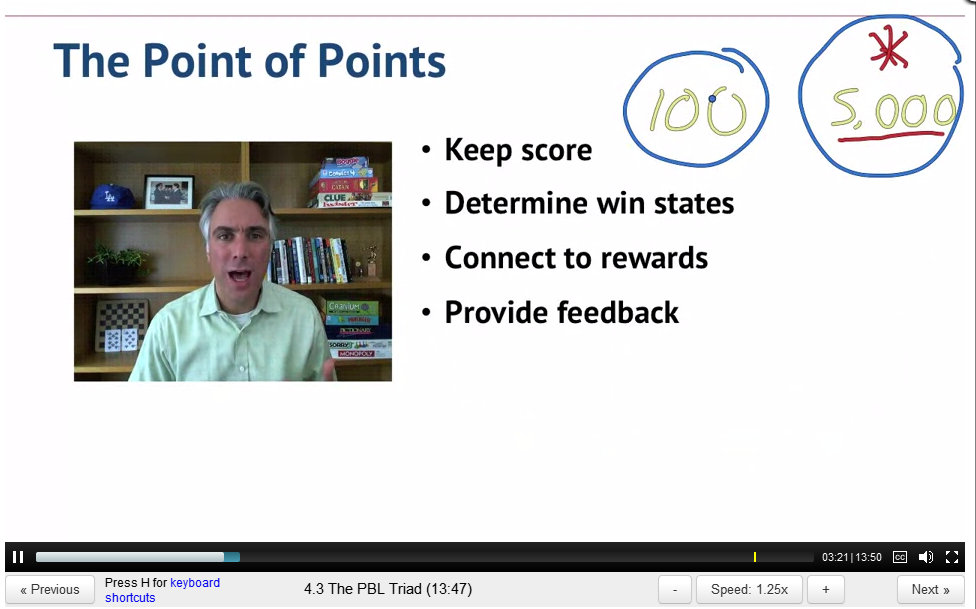
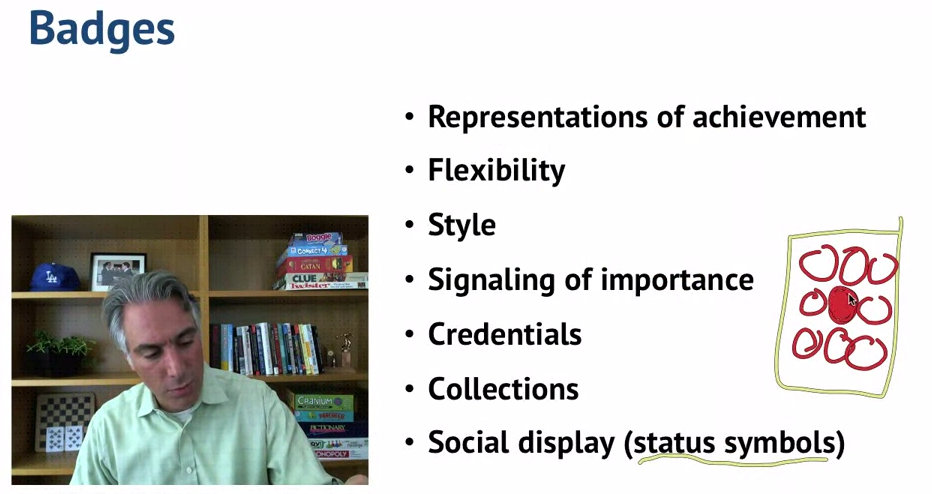


4 thoughts on “Gamification 4 – Game Elements”